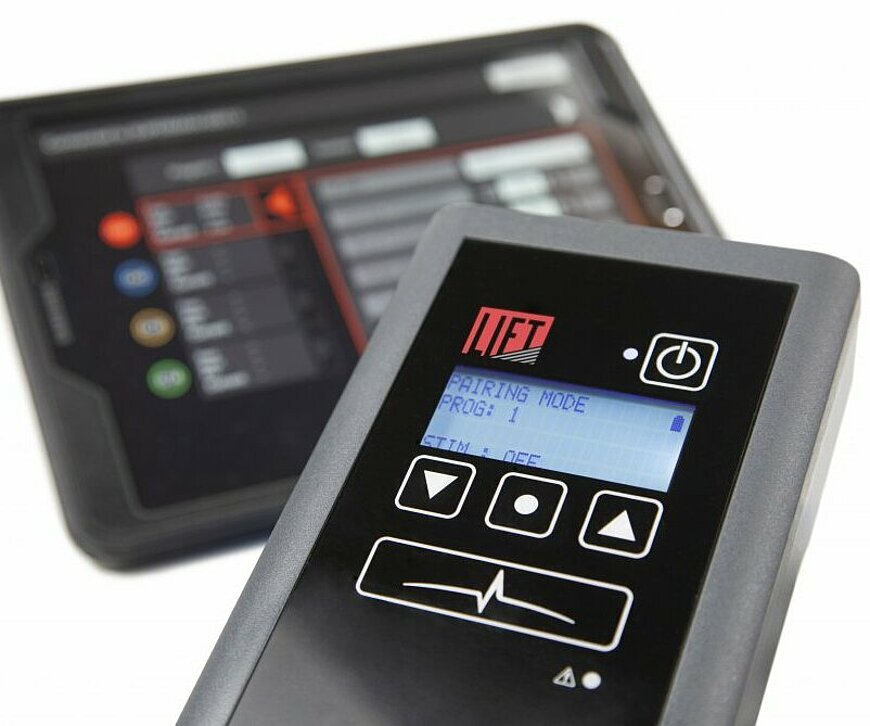ONWARD’s technology can restore the independence of those paralyzed due to spinal cord injury

An external stimulation device can help restore some of quadriplegics' use of arms and hands, allowing them to move in ways they haven't for years.
Moving our hands, picking up or holding objects might come naturally to most. However, to those with spinal cord injury (SCI), it can be next to impossible. ONWARD, formerly known as GTX Medical, has developed an external stimulation technology helping patients regain certain physical movements, often improving on years of physical therapy. An initial study in the United States demonstrated the technology’s effectiveness in improved and sustained hand and arm function for people with SCI. Now, the company has begun its large-scale clinical trial Up-LIFT.
One of the initial study’s participants was Jessie. Eight years ago, she was driving through the snowy mountains in Washington when a tree fell and hit her car. The accident made her quadriplegic and left her with very little function of her legs and even less of her hands and arms. “I couldn’t move anything,” she says. “Three months after the accident I still could not use my hands. I couldn’t drive my wheelchair with my hands, I had to use a wheelchair with a chin drive. You drive the wheelchair with your mouth.”
According to the WHO, between 250,000 and 300,000 people worldwide suffer from a SCI every year. SCI is the second leading cause of paralysis in the U.S. Besides physical therapy, there are next to no alternative treatment options. ONWARD is hoping to change that.
Treatment without surgery
“We’re a company that’s dedicated to developing technologies that help people with spinal cord injury,” says CEO Dave Marver. According to Marver, many SCI patients stop improving after roughly six months of therapy. With their external stimulation technology, that could change.
Their device consists of a wearable stimulator that uses high-frequency waveform to numb the skin in combination with a lower frequency stimulation pulse which targets and sends energy through the spinal cord. “Stimulations brings the neurons in the spinal cord below the injury closer to their threshold to send an action potential to the muscles,” explains Dr. Chet Moritz, who conducted the initial study and is co-pilot of ONWARD’s larger clinical trial. “It makes them more excitable, but doesn’t actually turn them on all the way. Then the few remaining pathways that may exist between the brain and the spinal cord that pass the lesion are able to cause those muscles to contract when people want to make the movement.” Other than ONWARD’s implantable device, it doesn’t require surgery.
The importance of using arms and hands
After two years of frequent physical therapy, Jessie had made little progress. She was able to drive her wheelchair with her hands, but her right hand was permanently curled into a fist. “I just struggled. I couldn’t hold a cup. I had to have a straw in it and place it on a table for me to drink,” Jessie remembers. A caregiver she hired and a friend helped her regularly with getting out of or into bed, changing her clothes, and making dinner. “The not walking, it’s not fun. But not being able to use your hands, that’s what ruins stuff.”
Research has shown that quadriplegics value the use of hands and arms above the ability to walk. Walking is only number five on quadriplegics’ list of priorities, after arm/hand function, sexual function, trunk stability, and bladder/bowel movement.
Once Jessie heard of the study conducted in Washington with ONWARD’s technology three years ago, she enrolled. “My personal philosophy is, if I want to see change and growth in relation to spinal cord injury, I need to do my part.”
Steady improvement
The study consisted of eight weeks of just physical and occupational therapy. It included a range of activities from trying to turn a key in a lock to tying a shoelace. This was to ensure that patients did not show improvements without ONWARD’s device. “It was hard, and it made me frustrated. I was like ‘I can’t do this and doing it ten more times didn’t make me any better at it’,” Jessie recalls.
Then, stimulation began. “It wasn’t a light switch for me. They didn’t turn on the stimulation and I was better. But I did notice by the end of the session, I was slightly better,” Jessie says. Improvement was steady. “They wanted you to use both hands to tie a bow. I definitely couldn’t use my right hand at all to help tie that shoelace. And I could now.”
Watch the video below to see some of Jessie’s progress:
Throughout the stimulation, she continued to improve. Even though she participated in the study three years ago, she has maintained all her new abilities. Jessie ended up buying a house, where she lives with her two dogs she takes on walks regularly. She cooks dinner by herself. She takes notes with her hands. “I could live independently,” Jessie says. “I just felt so much better about myself and, honestly, it made me happier.”
Trials to also take place in Europe
ONWARD’s large-scale clinical trial with the external stimulation technology, Up-LIFT, is set to be conducted at up to 15 different locations across North America and Europe and will involve 65 patients. The first patient was enrolled in Atlanta, Georgia, U.S. “We’re now funding the largest clinical trial ever done in external trans-continuous spinal cord stimulation with the expectation that we will get regulatory clearance by the FDA and other comparable authorities and be able to make it commercially available,” explains CEO Dave Marver.
With headquarters in Eindhoven, The Netherlands, and Lausanne, Switzerland, ONWARD is planning to enroll patients in the Netherlands as well, though it is not clear yet when and where the trial will take place exactly.
If the trial is successful, ONWARD is hoping the technology could be available as early as 2022.